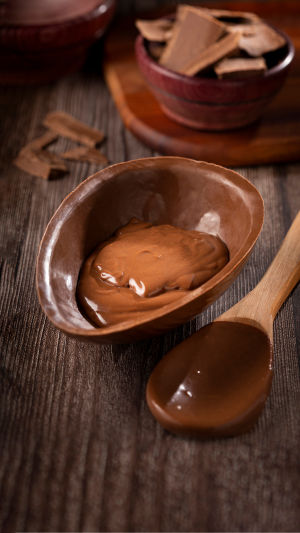The history of chocolate can be traced back to ancient Mesoamerican civilizations, particularly the Mayan and Aztec cultures. These ancient societies were the pioneers of utilizing cocoa beans to create a bitter beverage that bore little resemblance to the delectable chocolate we enjoy today.
It wasn't until the 18th century that chocolate underwent transformative changes in Europe. Dutch sugar makers played a pivotal role in inventing the method to produce cocoa powder.
This innovation not only made chocolate more accessible to produce but also significantly enhanced its flavor. As a result, chocolate began to proliferate throughout Europe and gradually emerged as a beloved dessert.
Chocolate, a universally appreciated treat, boasts a slight bitterness offset by its velvety smoothness and delightful taste. In the realm of international cuisine, chocolate is predominantly associated with desserts.
It can be savored on its own or used as a key ingredient in cakes, ice cream, and various other confections. Owing to its natural sweetness, chocolate has become an indispensable player in the romantic courtship rituals of many during Valentine's Day.
In today's market, chocolate falls into two primary categories: pure cocoa butter chocolate and cocoa butter substitute chocolate.
The principal distinction between these two lies in the type of cocoa butter employed in their production. Cocoa butter is a natural vegetable oil derived from cocoa pulp and serves as an essential raw material in chocolate production.
Pure cocoa butter chocolate employs cocoa butter processed from cocoa beans. This natural oil possesses a light yellow hue and a rich, smooth flavor that melts in the mouth.
In contrast, cocoa butter substitute chocolate employs specially selected palm kernel oil that undergoes advanced cooling and separation techniques to replicate the properties of cocoa butter.
Belgium, a country renowned for its rich history in chocolate craftsmanship, reigns supreme as the world's chocolate kingdom. Most internationally acclaimed chocolate hail from Belgium, a nation with a deep-rooted tradition of chocolate refinement and a reputation for producing the finest cocoa beans.
Familiar names like black truffle chocolate and Gillilan chocolate both trace their origins to Belgium, with Gillilan chocolate even earning a coveted gold medal from the Belgian royal family. Today, Belgium churns out a staggering 70 tons of top-quality chocolate daily, satisfying the palates of chocolate enthusiasts worldwide.
Chocolate is more than just a delectable treat; it wields a profound influence on culture. It is often used as a symbol for celebrations and a means to convey emotions.
On Valentine's Day, chocolates are exchanged as tokens of affection. Chocolate finds its way into movies, literature, and art, ingraining itself as a cultural icon.
Moreover, chocolate-making has blossomed into an art form, with dedicated chocolatiers crafting intricate chocolate sculptures and artistic creations. Chocolate also plays a prominent role in culinary endeavors, enhancing the flavors of numerous delectable desserts and pastries.
Indulging in chocolate has long been believed to have a mood-enhancing effect. Thanks to its tryptophan content, chocolate aids in serotonin synthesis, stabilizing moods and stimulating the production of endorphins and hormones, ultimately inducing feelings of happiness.
Certain chocolate components, like serotonin, share structural similarities with amphetamines and other synthetic substances known for their nervous system-stimulating properties. In clinical medicine, chocolate is even considered to have some anti-anxiety effects.





